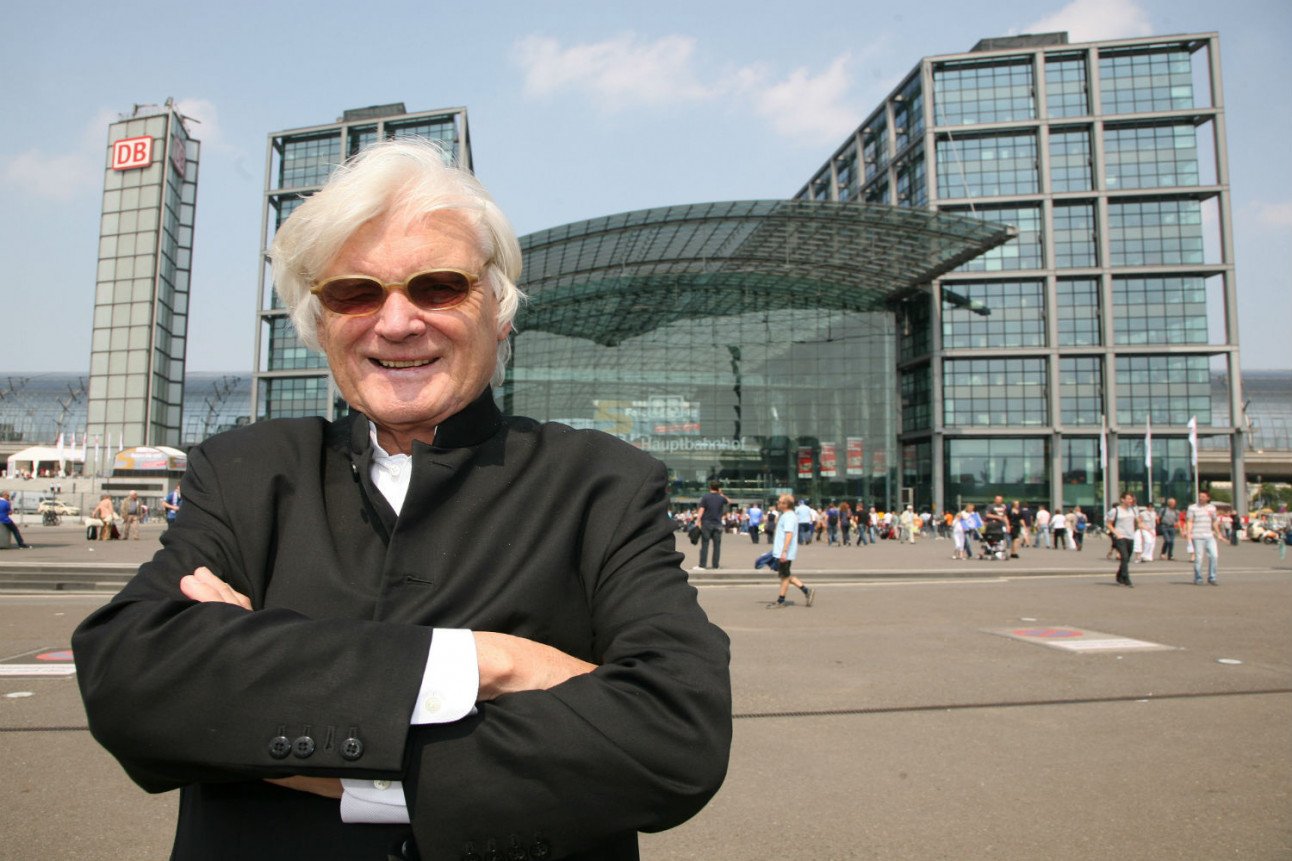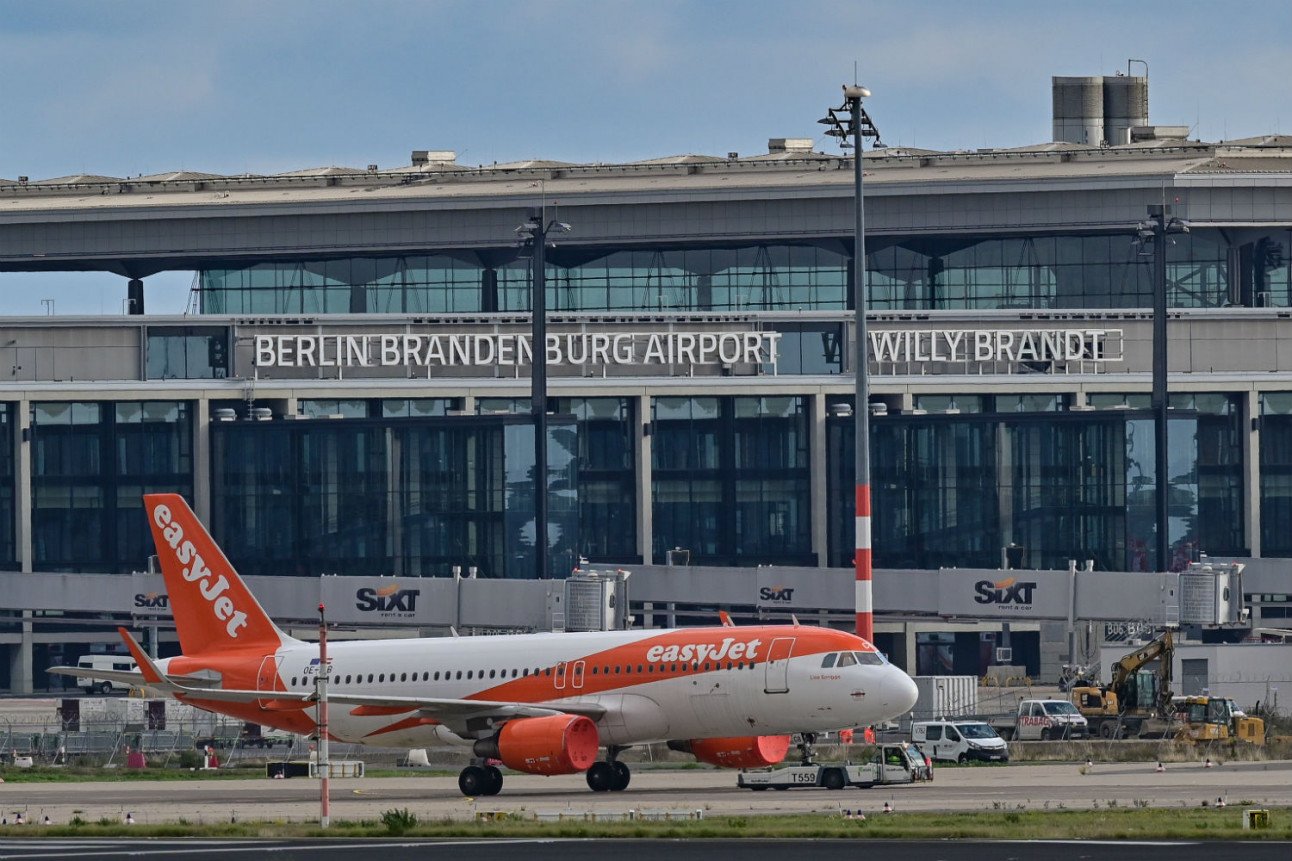REVEALED: The real story behind Berlin (BER) airport's nine-year delay

Technical problems and disorganisation are commonly cited reasons why the Berlin Brandenburg (BER) airport didn't open as planned nine years ago. But the story goes a little deeper than that.
If you live in Berlin, you are sure to know Meinhard von Gerkan’s work. The flamboyant architect was in his 30s when he designed Tegel Airport, whose departure halls are still beloved for their convenience. He’s also built the new Hauptbahnhof and renovated the Olympic Stadium.
But there is another project that he surely would rather forget: Berlin Brandenburg Airport (BER).
READ ALSO: What you need to know about Berlin's 'cursed' new BER airport
Back in the 1990s the reinstated capital decided it needed a modern airport befitting its status. Its three Cold War airports were too small, too central, too old fashioned.
Von Gerkan’s drawings for the new build were elegant. A single glass terminal would be covered by a flat roof spanning from parking bay to piers “in one gesture.” Suspended on columns, the roof was a homage to Mies van de Rohe’s “schwebende Dach” at the Neue Nationalgalerie.

Meinhard in front of Berlin's Hauptbahnhof. Photo: DPA
What a roof it was to be. Clean and pristine. Free from clutter like chimneys or air vents.
Achieving this goal wasn’t without complications, though. Fire safety, for instance. The price to be paid was a complex and costly smoke extraction system, which would suck smoke below the building via pipes controlled by a system of thousands of automatic flaps.
While the system was functional in theory, no one knew if it would work in practice.
But what’s money in the face of beauty?
“Simple truth doesn’t get you anywhere in my profession,” von Gerkan told Der Spiegel in 2013. “The Opera house in Sydney would have never been built if people had known all along what it would cost. One has to fake the numbers.”
For a city as broke as Berlin at the turn of the century, “faking the numbers” meant presenting a plan for a smaller, more humble building than that which would eventually emerge.
As one opposition politician observed, “the ink was barely dry on the planning certificate before a wave of changes were implemented.”
A whole new floor was added to increase capacity. Berlin’s mayor, Klaus Wowereit, insisted on a docking bay for the Airbus A380, even though German’s third largest airport wasn’t supposed to host the doubledecker.
READ ALSO: Berlin Brandenburg (BER) airport to finally open after nine-year delay
When building started in 2006, Mayor Wowereit declared it his “prestige project” and announced an opening date in November 2011 - coincidentally in the same year that he would be up for re-election.
Even before construction started, problems had arisen. The city gave up on its original idea to hand over the building site to a single construction company after all of the bids were suspiciously similar in size.
Wowereit and his colleague in Brandenburg, Matthias Platzeck, decided to oversee the project themselves. With the two SPD men at the helm, Berlin’s Mittelstand would benefit, they promised. Dozens of different contracts were handed out, with each company having responsibility for a different aspect of the build. How hard could it be?

The new BER right before its opening on Thursday. Photo: DPA
Well, quite hard actually.
In 2010, when one of the major contractors went bust, Berlin’s mayor had little choice but to push back the opening by seven months. The new deadline in June 2012 had to be met - the mayor wouldn’t tolerate anything less.
But when tests were finally conducted on the fire system at the end of December 2011, it failed. The automatic flaps didn’t open and close as they were supposed to. As predicted, the extraction fans exerted too much pressure, causing pipes to implode.
There was no chance of the system gaining approval from the TÜV, the German safety regulator, in time. So the airport management came up with a Plan B, which they called a “man-machine interface.”
According to the plan, work would continue on the fully automatic system after the opening day. In the interim, humans would respond to fires by manually opening and closing the labrynth of flaps.
The proposal was “an act of desperation,” one engineer later admitted.
When the district of Dahme-Spreewald, where the airport is situated, refused to give its approval, Wowereit conceded that the game was up. Just two weeks before opening, with tickets sold and the champagne practically on ice, the airport announced another delay, this time until 2013.
Eight years and several missed deadlines later, the airport will finally open next Saturday.
What happened to that beautiful roof? Well you can see for yourself when the airport opens on Saturday.
To read the full version of this article, visit hochhaus.news
Comments
See Also
If you live in Berlin, you are sure to know Meinhard von Gerkan’s work. The flamboyant architect was in his 30s when he designed Tegel Airport, whose departure halls are still beloved for their convenience. He’s also built the new Hauptbahnhof and renovated the Olympic Stadium.
But there is another project that he surely would rather forget: Berlin Brandenburg Airport (BER).
READ ALSO: What you need to know about Berlin's 'cursed' new BER airport
Back in the 1990s the reinstated capital decided it needed a modern airport befitting its status. Its three Cold War airports were too small, too central, too old fashioned.
Von Gerkan’s drawings for the new build were elegant. A single glass terminal would be covered by a flat roof spanning from parking bay to piers “in one gesture.” Suspended on columns, the roof was a homage to Mies van de Rohe’s “schwebende Dach” at the Neue Nationalgalerie.

Meinhard in front of Berlin's Hauptbahnhof. Photo: DPA
What a roof it was to be. Clean and pristine. Free from clutter like chimneys or air vents.
Achieving this goal wasn’t without complications, though. Fire safety, for instance. The price to be paid was a complex and costly smoke extraction system, which would suck smoke below the building via pipes controlled by a system of thousands of automatic flaps.
While the system was functional in theory, no one knew if it would work in practice.
But what’s money in the face of beauty?
“Simple truth doesn’t get you anywhere in my profession,” von Gerkan told Der Spiegel in 2013. “The Opera house in Sydney would have never been built if people had known all along what it would cost. One has to fake the numbers.”
For a city as broke as Berlin at the turn of the century, “faking the numbers” meant presenting a plan for a smaller, more humble building than that which would eventually emerge.
As one opposition politician observed, “the ink was barely dry on the planning certificate before a wave of changes were implemented.”
A whole new floor was added to increase capacity. Berlin’s mayor, Klaus Wowereit, insisted on a docking bay for the Airbus A380, even though German’s third largest airport wasn’t supposed to host the doubledecker.
READ ALSO: Berlin Brandenburg (BER) airport to finally open after nine-year delay
When building started in 2006, Mayor Wowereit declared it his “prestige project” and announced an opening date in November 2011 - coincidentally in the same year that he would be up for re-election.
Even before construction started, problems had arisen. The city gave up on its original idea to hand over the building site to a single construction company after all of the bids were suspiciously similar in size.
Wowereit and his colleague in Brandenburg, Matthias Platzeck, decided to oversee the project themselves. With the two SPD men at the helm, Berlin’s Mittelstand would benefit, they promised. Dozens of different contracts were handed out, with each company having responsibility for a different aspect of the build. How hard could it be?

The new BER right before its opening on Thursday. Photo: DPA
Well, quite hard actually.
In 2010, when one of the major contractors went bust, Berlin’s mayor had little choice but to push back the opening by seven months. The new deadline in June 2012 had to be met - the mayor wouldn’t tolerate anything less.
But when tests were finally conducted on the fire system at the end of December 2011, it failed. The automatic flaps didn’t open and close as they were supposed to. As predicted, the extraction fans exerted too much pressure, causing pipes to implode.
There was no chance of the system gaining approval from the TÜV, the German safety regulator, in time. So the airport management came up with a Plan B, which they called a “man-machine interface.”
According to the plan, work would continue on the fully automatic system after the opening day. In the interim, humans would respond to fires by manually opening and closing the labrynth of flaps.
The proposal was “an act of desperation,” one engineer later admitted.
When the district of Dahme-Spreewald, where the airport is situated, refused to give its approval, Wowereit conceded that the game was up. Just two weeks before opening, with tickets sold and the champagne practically on ice, the airport announced another delay, this time until 2013.
Eight years and several missed deadlines later, the airport will finally open next Saturday.
What happened to that beautiful roof? Well you can see for yourself when the airport opens on Saturday.
Join the conversation in our comments section below. Share your own views and experience and if you have a question or suggestion for our journalists then email us at [email protected].
Please keep comments civil, constructive and on topic – and make sure to read our terms of use before getting involved.
Please log in here to leave a comment.